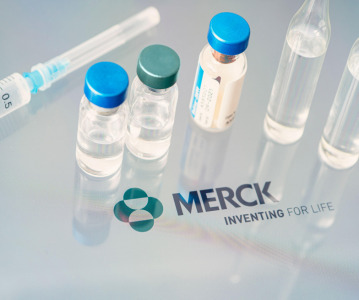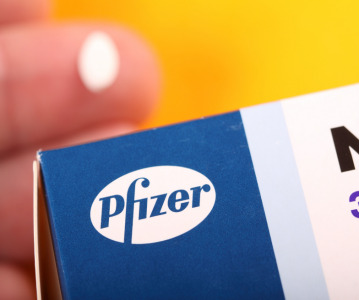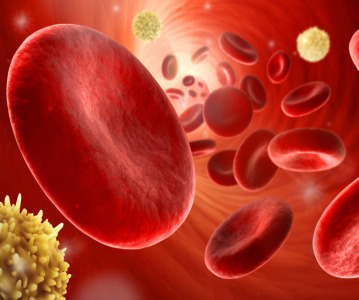Using AI to determine drug compounds to curb the opioid crisis
.png)
Researchers have developed a computer model, that learns using AI, to identify potential drug compounds that can be used to block opioid receptors in the brain.
In the USA, the opioid crisis has been a feature for decades, with three million people suffering from opioid use disorder, and over 80,000 Americans dying from overdoses each year.
Drugs in the opioid family – heroin, oxycodone, fentanyl, and morphine – work by activating µ-opioid receptors in the brain, which provides relief from pain and gives a state of euphoria. Alongside this however, is physical dependence on the opioid and decreased breathing rate, which in the event of an overdose can drop so dramatically as to cause death.
Physical dependence has been shown to decrease when k-opioid receptors – the receptors that mediate brain rewards – are blocked, in preclinical studies. By discovering drug that block these receptors, there could be a real opportunity to tackle opioid dependence, and curb the crisis.
Leslie Salas Estrada, part of the Filizola Lab, at the Icahn School of Medicine at Mount Sinai (NY, USA), will present her work on the subject at the 67th Annual Biophysical Society Meeting in San Diego, CA, USA in February.
“If you're addicted and you're trying to quit, at some point you will get withdrawal symptoms, and those can be really hard to overcome,” Salas Estrada explained, “after a lot of opioid exposure, your brain gets rewired to need more drugs. Blocking the activity of the kappa opioid receptor has been shown in animal models to reduce this need to use drugs in the withdrawal period.”
Unfortunately, to discover new drugs that do this can be like trying to find a needle in a haystack, which can be time consuming, costly, and fruitless, even when using computational models to screen compounds. This is where artificial intelligence (AI) comes in.
“Artificial intelligence has the advantage of being able to take huge amounts of information and learn to recognize patterns from it. So, we believe that machine learning can help us to leverage the information that can be derived from large chemical databases to design new drugs from scratch. And in that way, we can potentially reduce the time and costs associated with drug discovery,” stated Salas Estrada.
By using what the researchers already know about the k-opioid receptor, and the existing drugs on the market, they can populate a computer model with this information, and use AI to manipulate the model, along with a learning algorithm that rewards compounds with properties that make them appealing as drug treatments, to generate prospective compounds.
Using this method the team at Icahn School of Medicine at Mount Sinai have been able to identify numerous promising compounds, with the complimentary properties, with the hopes of testing them. This should be made possible once the drugs have been synthesised, their safety and efficacy in blocking k-opioid receptors assessed first in cell models and then in animal models.
Salas Estrada concluded, “we hope we can help people struggling with addiction.”
Related News
-
News Merck invests US$1 billion in new USA-based vaccine facility
Merck annouces the opening of a new state-of-the-art vaccine production plant in Durham, North Carolina, USA, in efforts to bring pharmaceutical product development onto home soil in face of new import tariffs. -
News US FDA adds haemodialysis bloodlines to devices shortage list
On March 14, 2025, the US FDA published an open letter to healthcare providers citing continuing supply disruptions of haemodialysis bloodlines, an essential component of dialysis machines. -
News Women in Pharma: Manufacturing personal and team success
Our monthly Women in Pharma series highlights the influential lives and works of impactful women working across the pharmaceutical industry, and how the industry can work towards making the healthcare industry and workplace more equitable and inclusive... -
News The next 15 drugs up for negotiation with Medicare include several blockbusters
By now, everyone is quite familiar with the drug price negotiations taking place between drug companies and the Centres for Medicare & Medicaid Services (CMS) in the USA as part of measures being taken to reduce the cost of drugs for patients, to make ... -
News Pfizer may shift production back to US under Trump pharma tariffs
At the 45th TD Cowen annual healthcare conference in Boston, USA, Pfizer CEO Albert Bourla outlined the potential for Pfizer to shift its overseas drug manufacturing back to the US as pharmaceutical industry players weigh their options against Presiden... -
News Experimental drug for managing aortic valve stenosis shows promise
The new small molecule drug ataciguat is garnering attention for its potential to manage aortic valve stenosis, which may prevent the need for surgery and significantly improve patient experience. -
News Trump's federal funding shift could stifle biotech innovation
Over a month into the second term of Donald Trump’s presidency and we have already seen some big changes affecting the healthcare industry. -
News Sanofi receives FDA warning over contamination at manufacturing site
The FDA issues a warning letter to Sanofi over contamination violations found at the Framingham biologics facility, in Boston, MA, USA.
Position your company at the heart of the global Pharma industry with a CPHI Online membership
-
Your products and solutions visible to thousands of visitors within the largest Pharma marketplace
-
Generate high-quality, engaged leads for your business, all year round
-
Promote your business as the industry’s thought-leader by hosting your reports, brochures and videos within your profile
-
Your company’s profile boosted at all participating CPHI events
-
An easy-to-use platform with a detailed dashboard showing your leads and performance







